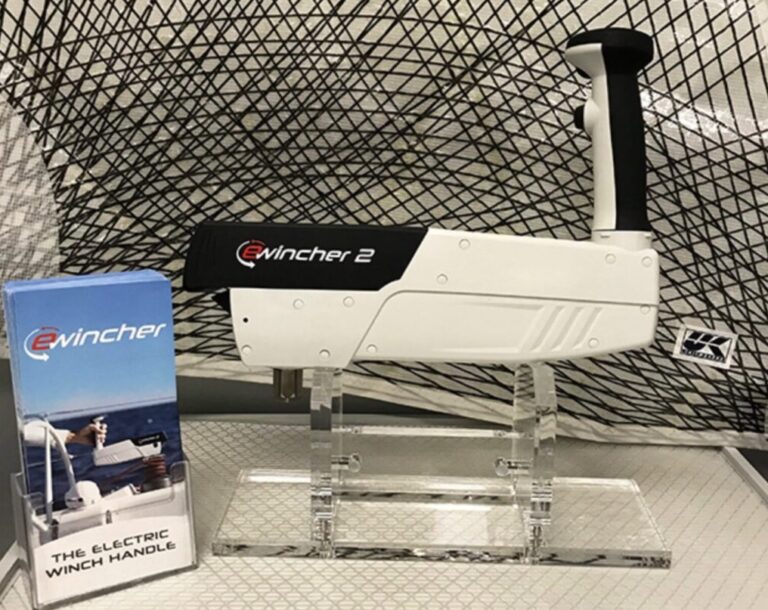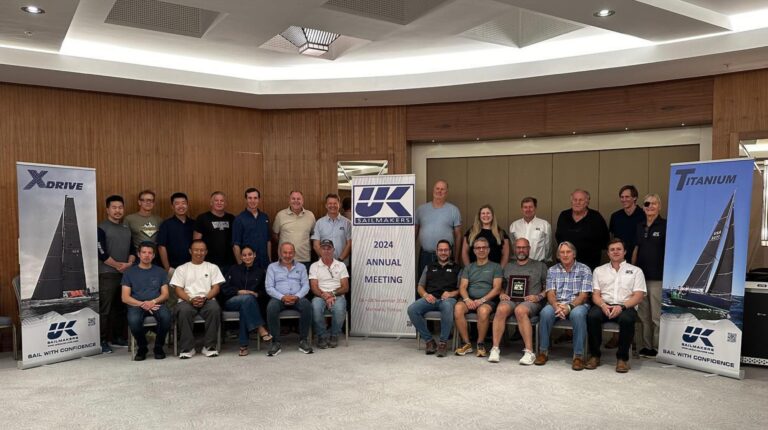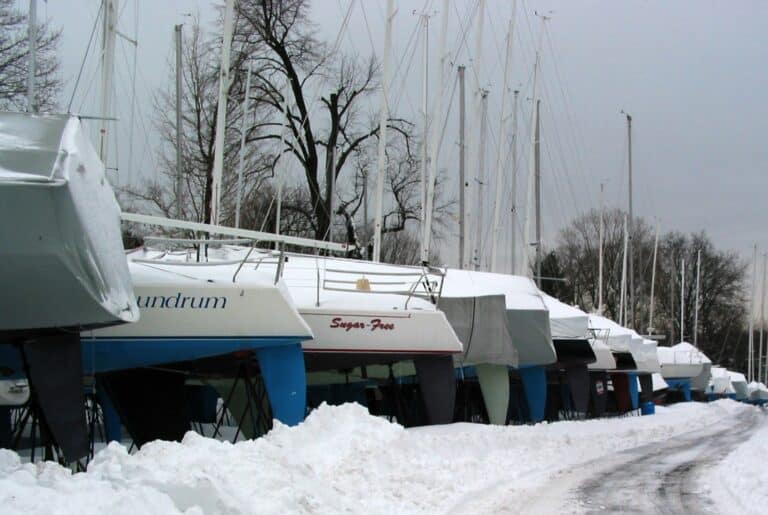PROFESSIONAL HEAVY WEATHER SAILING TIPS FROM PAUL EXNER
When you’re deep within heavy weather, your crew is either ready, or not — a crew unprepared will suffer human injury and break gear at a considerably higher rate than experienced sailors who’ve proactively geared themselves to handle rough conditions.
It’s common to underestimate the immense power-load that high wind and waves inflict on sailboats and crew. To appreciate the realm of heavy weather, sailors must actually sail in big weather several times — and, experience never alleviates the high-risk of facing heavy weather. Specialized knowledge, training,and hands-on skill is required to improve the odds of success.
Before your next slam-dance on the high seas, checkout my TIPS to help you prepare your crew and sailboat for heavy weather efficiency.
For relevancy on this matter, I’ll first mention my work with Kirsten Neuschafer (recent winner of the GGR around-the-world solo-race); she sought my coaching during her campaign, then asked for my storm-sailing advice on the eve of her departure from Nova Scotia into a 50-knot Gale in December to sail 10,000 miles to South Africa — without stop.
Rest assured, my pro-sailing tips are proven — valid info for all sailors including circumnavigation race winners.
TIP 1 : HUMAN READINESS
“Human readiness” encompasses a sailor’s entire character — health is wealth.
“Health” refers to everything a sailor feels, knows, imagines, and applies into actions aboard a sailboat. If sick, it’s harder to sail a boat. If ignorant, injury is likely.
Sailing is undoubtedly a physical sport — but without sharp-mindedness and fluid application of methodology that enables a sailor in a variety of conditions — the sailor truly cannot imagine how to efficiently manage themself in heavy weather — brains and brawn are required.
The best way to prepare our human readiness is to sail a lot — there’s no substitute for time spent on-the-water to gain sailing efficiency.
Reading books and watching videos about sailing are supplemental to on-the-water practice — I must emphasize that “knowledge” must be dissected from “content” so operational methods can be constructed and turned into practical actions. Human readiness is achieved when the sailor has many options to sail a situation and can take action appropriately with awareness and hands-on experience. “Ideas” without the skills to employ them are useless in heavy weather.

For example, assume you’re planning to sail a deep-offshore leg of 2-3 day duration, maybe you’ll depart despite a heavy forecast, or maybe you’re at sea already and heavy weather is imminent. Either way, human readiness requires the understanding of hundreds of details that must be organized before you’re ready to handle any possible weather. In such cases, the ultimate readiness occurs when many options are available to choose from. The goal is to keep the crew safe and the boat sailing in control; the goal is not reinventing the wheel. Human readiness for heavy weather includes having an array of sailing equipment available, and knowing how to employ everything: a reef-able mainsail, storm trysail, robust running rigging, heavy-air spinnaker, a variety of headsails; I want equipment that offers me readiness-options.
More importantly, it’s imperative I have a plan to utilize all equipment with mental and physical clarity — I must communicate with, and lead the crew to preempt any maneuver with organized actions so I have several options to choose from — but more options require more human readiness!
Just having the equipment aboard is step #1. But leading the crew to practice each available maneuver in controlled scenarios is everlasting.
Frankly, hands-on practice at the dock or in light conditions is better than nothing, but that’s simply not enough to attain human-readiness for heavy weather. When prepping for complex maneuvers in real situations, we refer to our experience and knowledge from articles, books, videos, and advice from colleagues; then, we create one cohesive plan of action for each maneuver — we must practice each maneuver in progressively difficult situations so we’re ready to do it in heavy weather where the stakes are higher. Establishing methodology and proving it through practice is the only way to be humanly ready for the physical and mental demands of sailing in strong wind.
TIP 2: NAVIGATION AND COMMUNICATION
Navigation AND communication are jointly-tied to sailboat operation — our navigation decisions will influence the way we manage ourselves under sail. Communicating how the crew will sail the navigated-route is crucial to carrying-out the objective, especially in heavy weather. This seems obvious, but the sailing-directive communicated by the Skipper, and how the crew communicates together is one of the weakest areas of crew-work that can be easily improved through training.
Good nav and comm depend on forward-looking leadership. Leadership communicates the expectations of the route to be sailed in clear terms: “For the next X-hours the sailing-conditions are expected to be Z; we’ll deploy this sail-configuration and sailing-style as a means of reaching waypoint-B according to this ETA.”
In turn, a crew who understands expectations is empowered and will concentrate on their team-work, communicating amongst each other with focus. In heavy weather, this level of planning-and-communication greatly heightens the odds of success, minimizing human-injury and gear-breakage. It also motivates crew to achieve peak efficiency; crew-happiness is raised when sailors strive to meet clear expectations.
TIP 3: MARLINSPIKE SEAMANSHIP
Crew who have a solid grasp of their rigging systems: running rigging layout, shackle types, rope-clutch nuances, friction points, gear stowage plan, and have proficiency with knot-tying and line-coiling will excel better than crew who lack hands-on fluency. Skills as basic as tying a bowline cannot be taken for granted, especially in heavy weather!
Too often I see sailors tie fancy one-handed bowlines at the dock but cannot finish a bowline on the bow with 30-degrees of heel in bucking seas. I’ve seen crew at night with their head-lamps glowing, trying endlessly to complete a rigging task only to return to the cockpit seasick — most unfortunate, considering these skills will improve with diligent training.
“Rigging” is something that all sailors believe they’re proficient in, but my coaching experience has shown that rigging-skill can be measured and ranked amongst crew. I’ll advise you here and now that any mention of ranking the crew’s ability by demonstration of their marlinespike skill is enough impetus for them to self-improve to save embarrassment.

Encourage crew to train by visualizing rigging setups and solving rigging problems from various angles and orientations. Describing each rigging component orally is a good mental exercise that demonstrates understanding and improves a sailor’s communication skill at the same time.
TIP 4: ASSESS HEAVY WEATHER DEFICIENCY & IMPROVE
These Paul Exner Pro-Sailing Tips are written exclusively the UK Sailmakers website readers — these training tips are a starting point to improve heavy weather efficiency — but there’s more to this topic.
An honest assessment of your equipment and crew-readiness for heavy weather is required — without it, the road to proficiency is long and winding.
STEP 1: Begin by evaluating the ability of you and your crew to handle your boat in 10-15 knots for: 1) Human Readiness, 2) Nav & Comm, and 3) Marlinspike. Have fun creating your own sub-topics within each category and rank yourself on a scale of 1-3; so, 1 = needs improvement, 2 = average ability, 3 = rock star. Be honest with yourself.
STEP 2: Think about the maneuvers you do now: tacking, jibing, reefing, hoisting/dousing the spinnaker, etc. Can any area improve? If so, begin working on the skill of worst-performance first, then move to the next skill until you feel at least averagely proficient in all maneuvers. Use my process to improve: 1) Start with your existing knowledge and introspectively dissect the details for each crew for every step. 2) Assemble new methods for the maneuver by looking at the process in three phases: starting-point, what happens in the middle, and what’s the end-result. My “assembly” process helps you create killer methods. Then, go sailing and practice!
STEP 3: Participate in the best Heavy Weather Mastermind coaching anywhere — work with Paul Exner one-on-one and collaborate with his keen group of sailors all focused on heavy weather efficiency for 9-weeks, beginning October 10, 2023
STEP 4: Immerse in heavy weather training with Paul Exner in Hawaii’s treacherous Alenuihaha Channel for 8-days in January of 2024
If you have questions about my TIPS, please email me personally: paul@moderngeographic.com








Really enjoyed reading this. Lots of good points to work on.